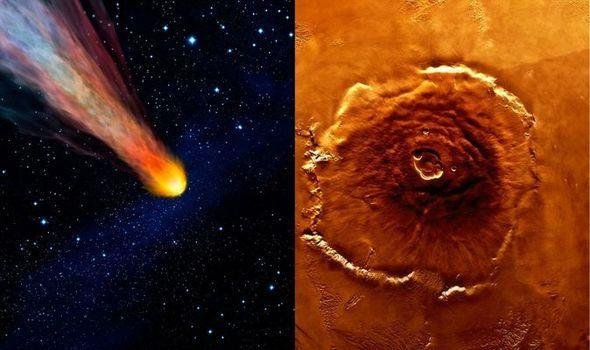Meteorite broadly is a chunk of rock or iron of exterior layer or surface which survives the path through the atmosphere. After falling on earth meteorite forms impressions in the form of craters(a hole or pit caused after the explosion). Back in, recently study expects that NASA and ESA must consider craters for exploration and research their invaluable post-brunt geological conditions or conceivably the significance to the prime locations for searching potential habitats for extra profane life. The study is published in Astrobiology that extraterrestrial life may develop on other planets beyond the solar system.

Director of Western’s Institute for Earth and Space Exploration Dr Gordon Osinski said “There are a lot of hypotheses for where life started on Earth and where we should look for life on Mars, but we are overlooking a major geological force and a key habitat in understanding the origin of life and that’s meteorite impacts and their resulting craters,” which gives a sign that there must be something serious about craters moreover Osinski did a great and astonishing study explaining things more clearly as he also remarked by saying “If you ask anyone to imagine what happens when you have kilometre-size chunks of the rock hitting the Earth, it’s typically destructive. It’s an extinction event like the one that killed the dinosaurs, what we’re trying to do here is turn that idea upon its head and say yes, the impact is Initially harmful but it also offers life-building blocks and establishes new ecosystems. They [impact craters] basically create an oasis for life, “it was Osinski’s voluminous field and laboratory research on craters created by meteorite aftereffects for an immense span of two decades.
Osinski and collaborators argue that considering the omnipresent existence of impact events and their increased frequency over the first 500 million years of the history of the Solar System, meteorite impact craters may represent the most likely sites on Earth where life began. Sadly, Osinski says, we will never really know.

He also said, “I put my money on meteorite impacts as the location where life could have started on Earth, but we will never know,” said Osinski, also Professor at the Department of Earth Sciences in Western Europe. “Unfortunately, owing to billions of years of erosion, plate tectonics and volcanism, we have destroyed the vast majority of the ancient rock record on Earth.”
Through exploring Mars with rovers such as Perseverance and ExoMars, Osinski claims that planetary scientists will finally find out the origin of life — and they could — as long as they search in the right place.
With these ideas in mind, there are other impact craters on Mars that might have been easier to explore,” Osinski said. “But in Jezero Crater, Perseverance can land and there is evidence of minerals such as clays created by hydrothermal activity. It is a good place to continue researching the role of meteorite impacts in the history of life as long as they look out for habitats, nutrients and create life blocks as we described in our study.”

To date, 200 impact craters on Earth have been studied and confirmed using fieldwork, geophysics, satellite data and various laboratory research techniques in Western and other groundbreaking laboratories worldwide.
